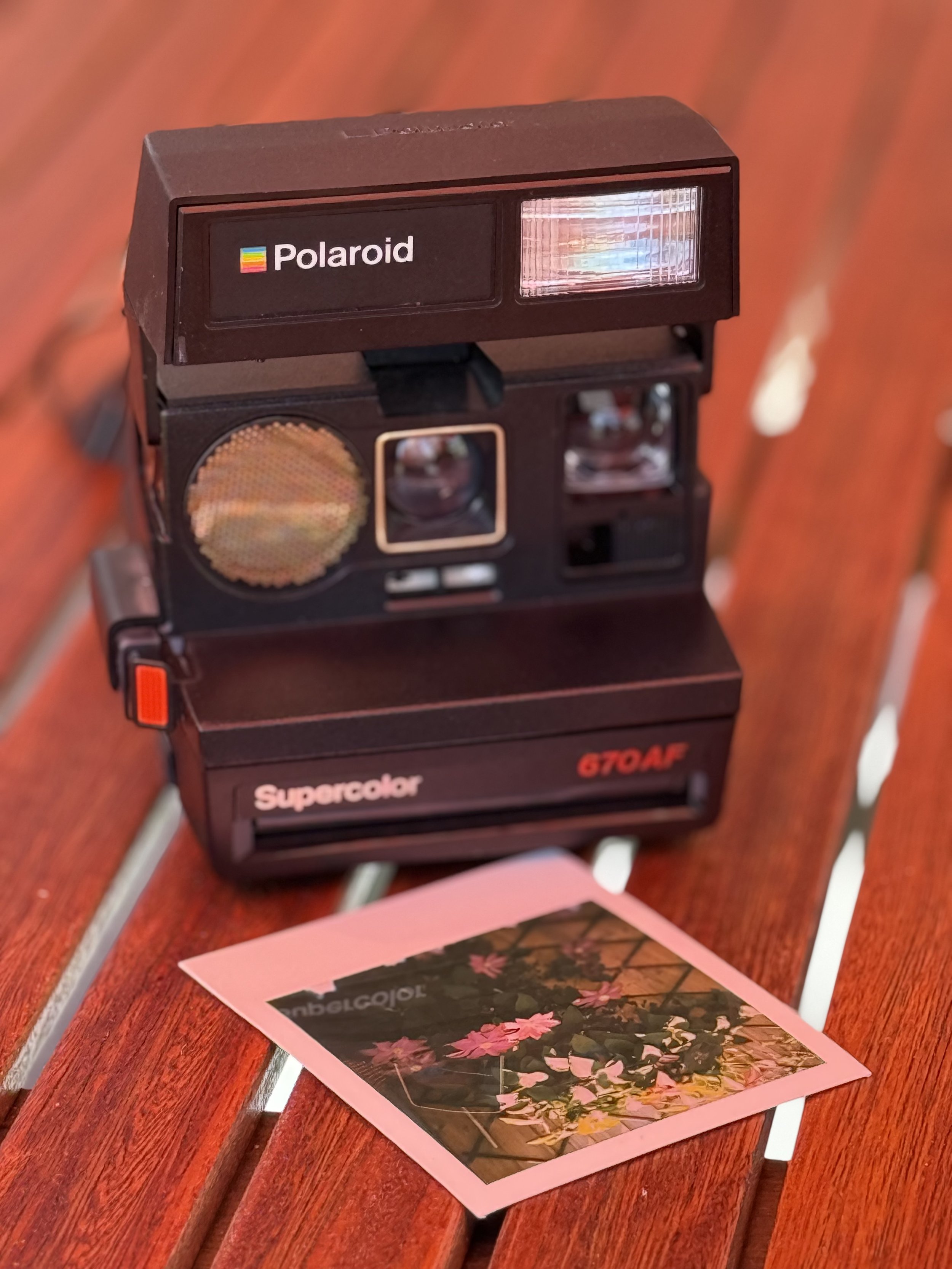Polaroid Supercolor 670AF
A retro trip to ‘instant’ photography
Out of curiosity rather than a specific interest in it’s ability, I decided to purchase a film for this Polaroid 670AF and have a play with a late 1980’s iconic ‘instant’ camera.
Buying a film to test it is actually quite a commitment, at £18 for an 8 shot film pack, Polaroids are an expensive camera to play with nowadays, Polaroid 600 film is still being produced.
There are so many curious aspects to these cameras, even before we get to the film and it’s self development. The flash flips up to reveal the lens and a couple of indicator lights for the flash and additional controls. Without a film loaded it’s impossible to test the camera’s operation as the film pack also contains the battery to power all operations.
The camera lens sits in the centre, the viewfinder to the side and the camera’s ‘ultra-sonic’ auto focus mechanism sits behind the gold coloured disc. Below the lens is a (rudimentary in my experience) exposure compensation switch. The red button on the left of the camera, as seen from the front, is the shutter button which also fires the flash by default. It’s not clear whether the camera compensates for flash illumination but it always seems odd to me to fire the flash for every shot, you can bypass it by pressing the button behind the red one but it’s not comfortable to do so.
In testing I have to say the autofocus function is questionable, the results weren’t far away from those produced by a fixed focus lens, although there is a switch to over-ride the AF if shooting through windows!
In use the camera is quite large and unwieldily to shoot with, you need to avoid blocking the film ejection slot when holding and as mentioned above, the shutter button is quite awkward. The lens is around 40mm and the viewfinder provides a corresponding, square only view. Disabling the AF, adjusting the exposure by brightening or darkening (although I didn’t find that control effective) and shooting without flash are the only controls available.
It’s a difficult camera to be discreet with, with the flash unfolded it’s big and, when I was out shooting with it, it drew quite a lot of attention! The real issue with it however is how loud it is!
Immediately after pressing the shutter button, the camera creates a loud whirring as the print is ejected. In close proximity to your subject or in a busy location, everyone’s going to know you’ve just taken a photo, even before the camera produces a print that you immediately need to grab!
Polaroid cameras are famous for producing ‘instant’ photos and you might be familiar with images of people shaking or ‘wafting’ the unique square prints around to develop them. With the 670AF and it’s 600 film, both of these impressions are sadly wrong. The instructions with the camera/film advise the photographer to immediately place a newly ejected film into a dark and warm location (a pocket) to develop over 10 to 15 minutes, and definitely not to shake or bend it.
In fact the film is quite fragile, susceptible to contamination on the cameras rollers (easily accessible when loading film and easily cleaned), damaged if bent whilst processing, requiring warmth to process and remaining sensitive to direct light, even when fully processed.
probably not advisable but when dis-assembled, the film packs reveal a novel battery, not exactly environmentally friendly though!
Out shooting with the camera on a bright and sunny day it’s immediately clear that this camera and film combination demands good lighting, even with the film rated at ISO640. Perhaps that’s why the camera’s default is to fire the flash. Photos are produced on the iconic 9cm x 11cm bordered prints, the actual image being approximately 8cm x 8cm and it’s fair to say pin-sharp quality is not this camera’s strength. In my experience prints retained highlights in the brightest conditions, skies always retained tone and colour, but shadows were quickly lost, resulting in quite dark and low contrast prints.
A shot taken inside, close to the subject and with the flash firing still produced a dark, underexposed print.
I sound like I’m quite negative about the Polaroid 670AF and it’s fair to say the novelty of shooting with it lasted about as long as one of the prints took to develop, in fact I sold it to an enthusiast before I’d finished the whole film pack!
I know this camera is something of a ‘cult classic’ but for me it’s a novelty that didn’t last. In the 80’s access to almost instant photography was a strong selling point, especially for families and holidays, but, even with it’s retro look, process and photos, it’s just too expensive and produces poor quality prints. Sorry!
Do you have a Polaroid camera? What do you love about it, what did I miss? Let me know in the comments below.



